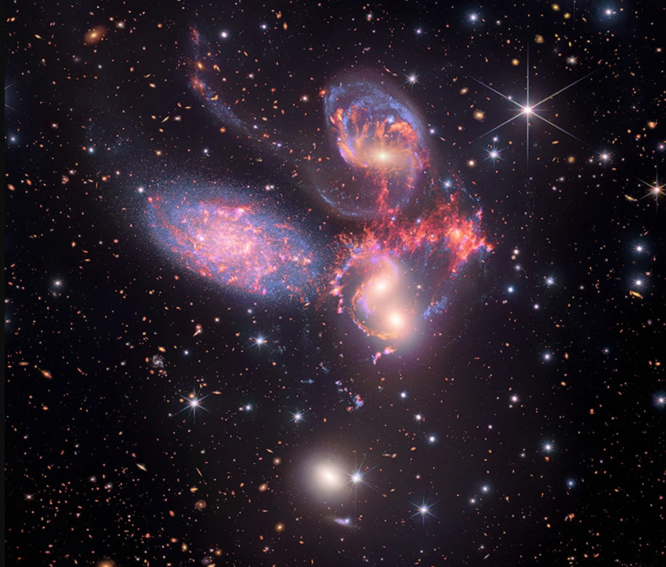NASA’s Stephan’s Quintet data may be seen and heard.
Image, 3D video, and “sonification” of the compact galaxy group are presented.
Stephan’s Quintet is 290 million lightyears distant in Pegasus’ Great Square asterism.
Astronomers and visualisation experts have created multisensory experiences using data from NASA’s Hubble Space Telescope, Spitzer Space Telescope, Chandra X-ray Observatory, and James Webb Space Telescope.
Stephan’s Quintet is seen in Webb infrared light (red, orange, yellow, green, and blue), Spitzer data (red, green, and blue), and Chandra x-ray (light blue).

The 5-minute movie takes viewers on a ‘3D’ tour of Stephan’s Quintet’s science.
Audio data from observatories is released.
The picture is “sonified” from top to bottom.
The data and brightness affect the audio track’s pitch and tone.
Webb utilized a synthetic glass marimba to simulate background galaxies and foreground stars.
Crash cymbals depict diffraction-spiked stars.
Chandra’s x-ray data sounds string-like, whereas the quintet’s five major galaxies have smooth synthetic tones.
“The visualisation team started with the scientific observations from the various telescopes, and then applied some of the same software that Hollywood uses in their feature films to the data,” says Frank Summers of the Space Telescope Science Institute in Baltimore, who led the video team.
“This combination creates a cinematic learning experience, merging the intellectual and emotional into one presentation so it has a stronger impact on the audience.”
“Sonifications offer a sensory way for me to experience the scale and potency of astronomical phenomena,” says Christine Malec, a blind and poor vision NASA supporter.
“They invite blind and partially-sighted people to listen, enjoy, and then read to understand what they heard.”

